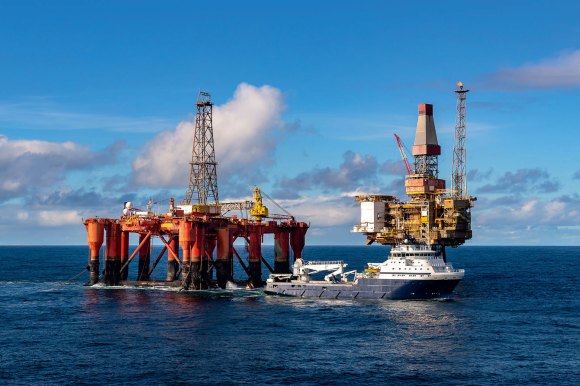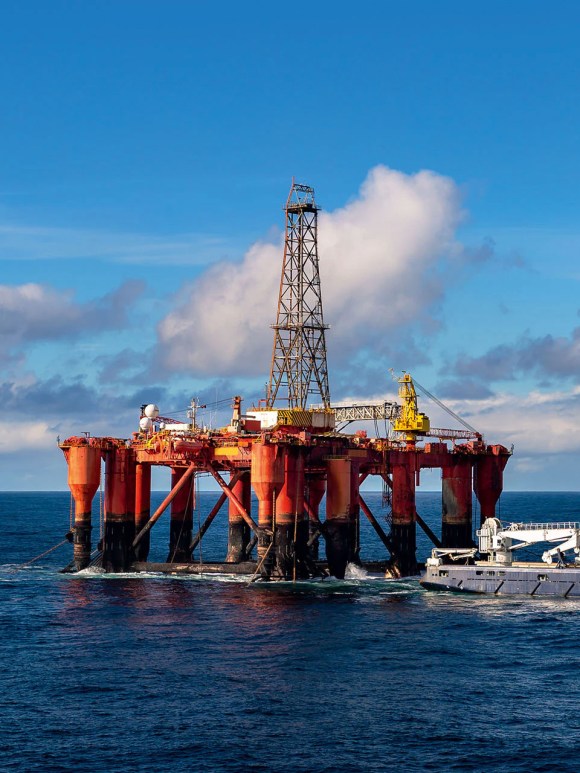Industry News
Norway and the UK are on course to achieve significant milestones due to notable increases in investments, exploration success and production, according to research from Rystad Energy. Solid oil and gas production from the region is also providing indispensable resources to Europe and the rest of the world navigating through the energy
transition.
Investments in Norway’s oil and gas industry are expected to reach a record-high of about $21 billion in 2023. It comes as several key projects have been approved in recent years, driven by the country’s temporary tax regime, which was introduced to incentivise spending on the Norwegian Continental Shelf.
Emil Varre Sandoy, vice-president upstream, Rystad Energy, said: ‘With an impressive growth rate this year, the total investments in the Norwegian oil and gas industry are projected to surpass the record set in 2013, when total investments reached about $19 billion. Investments in 2023 are expected to reach an all-time high.›
Despite a decline of almost 15%, from a peak of nearly 4.6 million barrels of oil equivalent per day (boepd) in 2004, Norwegian oil and gas production is set to rise again. By 2025, production might rise back towards peak levels as a result of increased focus on gas production and new projects in the pipeline. These volumes will be produced with one of the world’s lowest CO2 footprints, said Rystad.
Oil and gas investments in the UK have not recovered in the same way as in Norway. It is expected that 2023 investments will be around 75% lower than 2013, when investment peaked at nearly $22.7 billion.
With many developments in the pipeline, however, next year could see the highest number of projects sanctioned in a decade. While three to five projects are sanctioned, on average, in the UK each year, 14 new oil and gas fields are expected to be given the green light in 2024.
Sonya Boodoo, senior upstream analyst, Rystad Energy, said: ‘The three largest projects are Rosebank, Cambo and Clair Phase 3. If these major projects get approved, 2024 could mark the highest sanctioning activity since 2013, with around £9.5 billion in future investments.’
In 2014, 57 new oil and gas exploration wells were drilled in Norway. Only two years later, the count fell to 27 as the oil price collapsed in 2015 and 2016. Activity increased in 2018 and 2019, before falling again in 2020 due to Covid-19 and low oil prices.
This year, the number of exploration wells is expected to reach 35 and is anticipated to grow to 36 next year. It has also been a good year for new discoveries, with similar volumes as last year already uncovered, despite only about half of the planned wells for 2023 being completed to date, said Rystad.

Quick Links
Search
Industry News
- Volume 41 | Issue 10 | October 2023

Norway and the UK are on course to achieve significant milestones due to notable increases in investments, exploration success and production, according to research from Rystad Energy. Solid oil and gas production from the region is also providing indispensable resources to Europe and the rest of the world navigating through the energy
transition.
Investments in Norway’s oil and gas industry are expected to reach a record-high of about $21 billion in 2023. It comes as several key projects have been approved in recent years, driven by the country’s temporary tax regime, which was introduced to incentivise spending on the Norwegian Continental Shelf.
Emil Varre Sandoy, vice-president upstream, Rystad Energy, said: ‘With an impressive growth rate this year, the total investments in the Norwegian oil and gas industry are projected to surpass the record set in 2013, when total investments reached about $19 billion. Investments in 2023 are expected to reach an all-time high.›
Despite a decline of almost 15%, from a peak of nearly 4.6 million barrels of oil equivalent per day (boepd) in 2004, Norwegian oil and gas production is set to rise again. By 2025, production might rise back towards peak levels as a result of increased focus on gas production and new projects in the pipeline. These volumes will be produced with one of the world’s lowest CO2 footprints, said Rystad.
Oil and gas investments in the UK have not recovered in the same way as in Norway. It is expected that 2023 investments will be around 75% lower than 2013, when investment peaked at nearly $22.7 billion.
With many developments in the pipeline, however, next year could see the highest number of projects sanctioned in a decade. While three to five projects are sanctioned, on average, in the UK each year, 14 new oil and gas fields are expected to be given the green light in 2024.
Sonya Boodoo, senior upstream analyst, Rystad Energy, said: ‘The three largest projects are Rosebank, Cambo and Clair Phase 3. If these major projects get approved, 2024 could mark the highest sanctioning activity since 2013, with around £9.5 billion in future investments.’
In 2014, 57 new oil and gas exploration wells were drilled in Norway. Only two years later, the count fell to 27 as the oil price collapsed in 2015 and 2016. Activity increased in 2018 and 2019, before falling again in 2020 due to Covid-19 and low oil prices.
This year, the number of exploration wells is expected to reach 35 and is anticipated to grow to 36 next year. It has also been a good year for new discoveries, with similar volumes as last year already uncovered, despite only about half of the planned wells for 2023 being completed to date, said Rystad.

